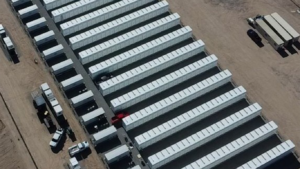There are bars on almost every street corner in a busy city. Many of them come and go, while others remain staples of the neighborhood for decades. What sets them apart? In many cases, it’s the right design and ambiance (which gives other elements – such as food and drink – the ability to shine through).
There’s no template for creating a bar. In fact, it’s the uniqueness of different bars that give them their appeal. If every bar had the exact same vibe, layout, or amenities, there would be nothing special about them. Having said all of that, there are several distinct things you can do to make a bar stand out. Here are several tips:
1. Choose the Right Materials
While most bar owners immediately want to dive in and focus on finishes, entertainment, and all of those fun details, you have to begin with material selection. It might be boring, but it lays the foundation for everything else.
When it comes to the actual bar area itself, you have to be especially mindful of materials. This is a messy area and you can easily create problems for yourself if you aren’t strategic.
For example, stay away from standard drywall or wood underneath the bar. Instead, select waterproof materials that have antibacterial properties, like Trusscore panels. These boards are made of PVC, which is impermeable to moisture, making it ideal for this sort of environment.
2. Pick Good Design Finishes
Okay, now for the elements that are a little more fun and rewarding. This includes taps, decor, TVs, barstools, furniture, etc. When creating a design plan, think in terms of cohesive ambiance.
“Authenticity is what guests will notice — and that’s what will resonate with them,” designer Tyler Zielinski mentions. “One of the reasons that tiki bars are so popular is because of the escapism they offer through their kitschy design, music, staff uniforms, and tropical drinks.”
You don’t have to choose a cheesy theme, but you do need a cohesive style. For example, if you’re going for a modern, upscale look, don’t mix in elements of a dive bar. From the entrance to the bathrooms, all finishes should match one another.
3. Choose the Proper Layout
Your bar’s layout is another element to focus on. Again, think strategically here. It’s all about how you can create a space that’s both functional and cohesive with the overall ambiance.
When it comes to layout, there are several factors you must take into account. They include building codes, regulations, accessibility, budget, efficiency, social distancing, and aesthetic. From a spacing perspective, you’re going to want something like 15 to 20 square feet per customer. So if you plan to have a maximum capacity of 100, you need a minimum of 2,000 square feet. (That doesn’t count space behind the bar, bathrooms, kitchen, etc.)
You’ll also have to think about guest considerations like bar height (usually between 40 to 42 inches), seating options and arrangements, and the integration of flex spaces (to accommodate different weather).
4. Think About Lighting
Few things are more influential to the ambiance of a bar than lighting. Lighting temperature, color, and hue can totally transform the look and feel of a space. Ideally you want to install a lighting system that’s totally customizable. This allows you to adjust levels for different times of day, seasons, and events. For example, lighting might be brighter during the early evening hours before dimming for the later evening hours.
5. Give Patrons Something to Do
This isn’t always necessary, but it’s certainly a good touch. By giving patrons something to do, you (a) make your bar more memorable, and (b) encourage people to stick around for longer periods of time (increasing the average transaction size in the process). Good examples include arcade games, board games, yard games, jukeboxes, trivia, live music, and/or standup comedy shows.
Adding it All Up
Hopefully, this article gives you a pretty good idea of which elements are most important when designing a bar. Whether it’s foundational elements like choosing the right materials or smaller details like selecting the proper lighting, everything comes together to create a compelling environment that draws people in. Don’t overlook any of them, or you could compromise your success.




